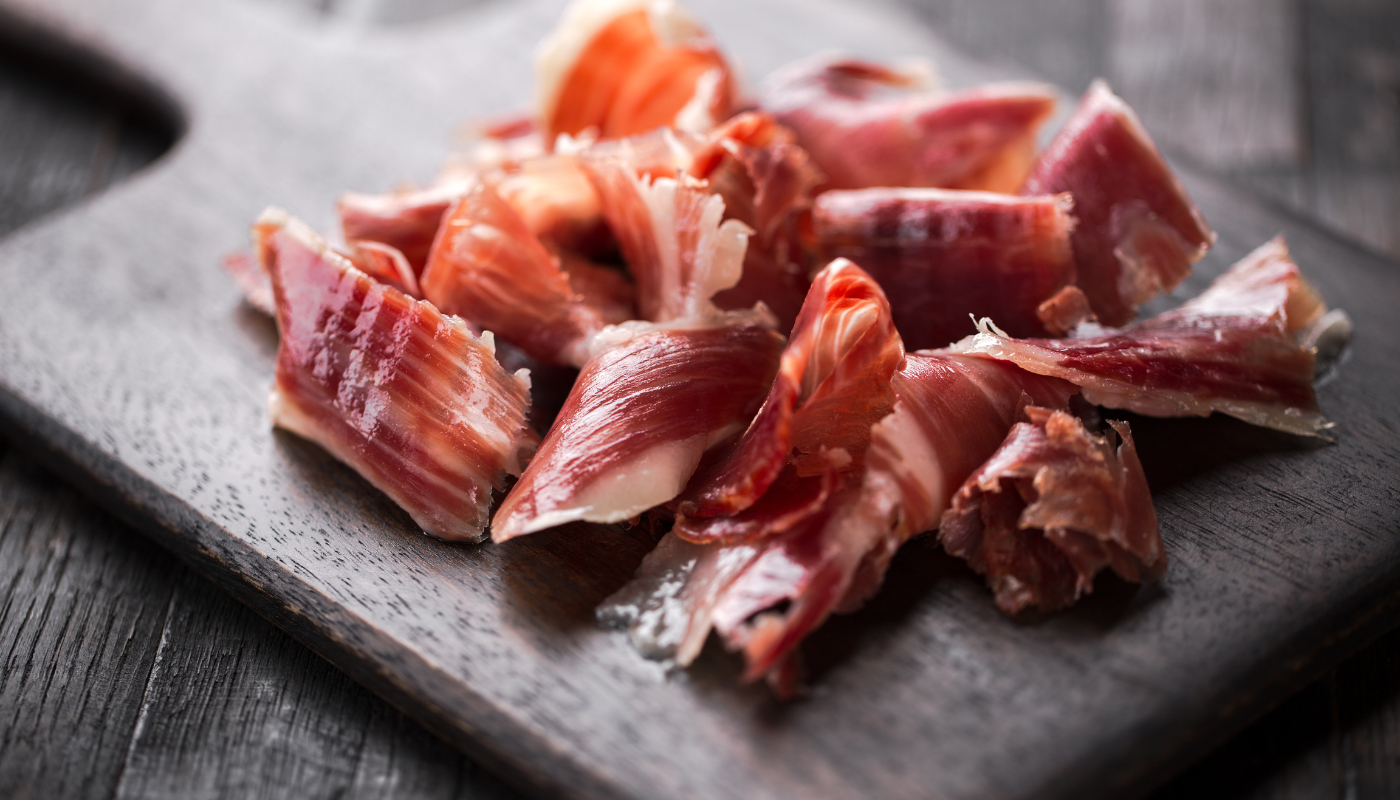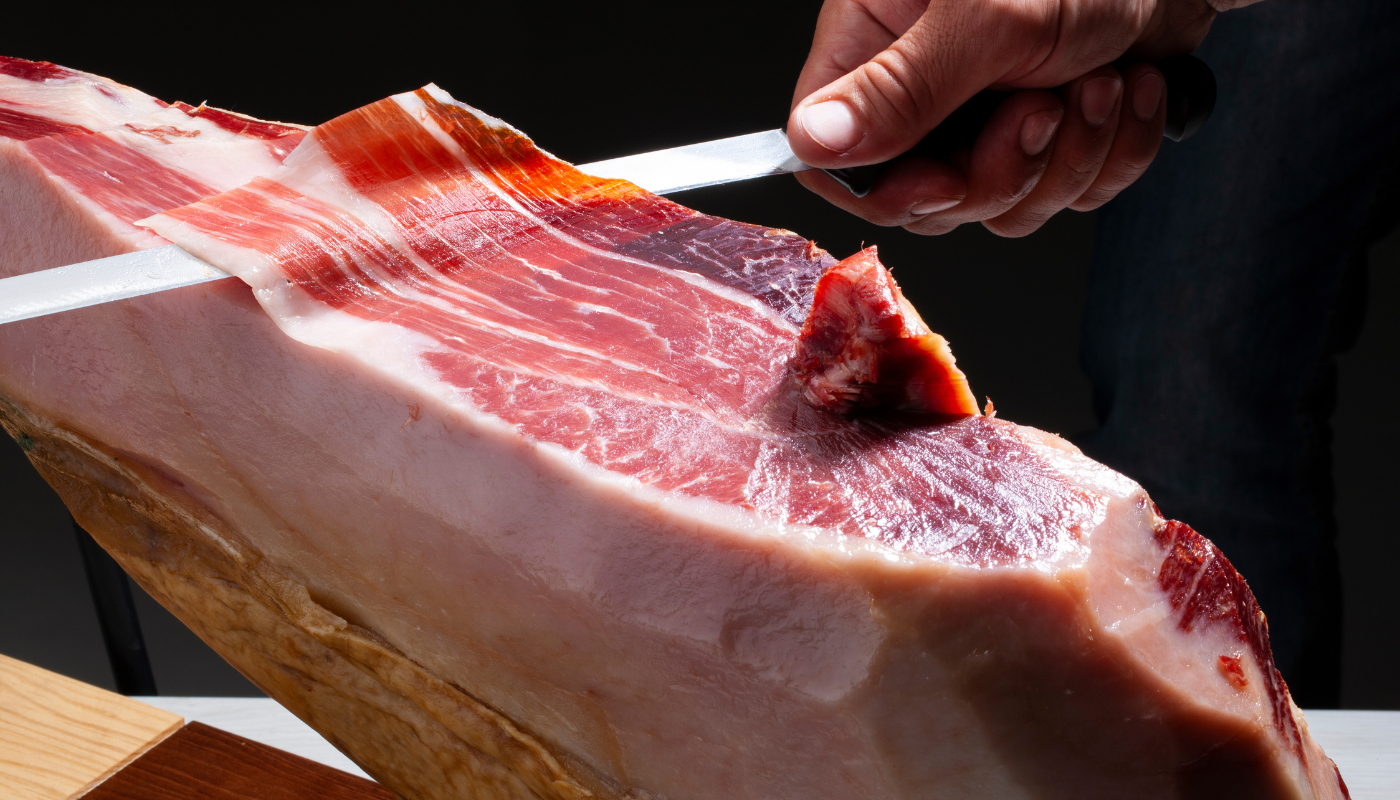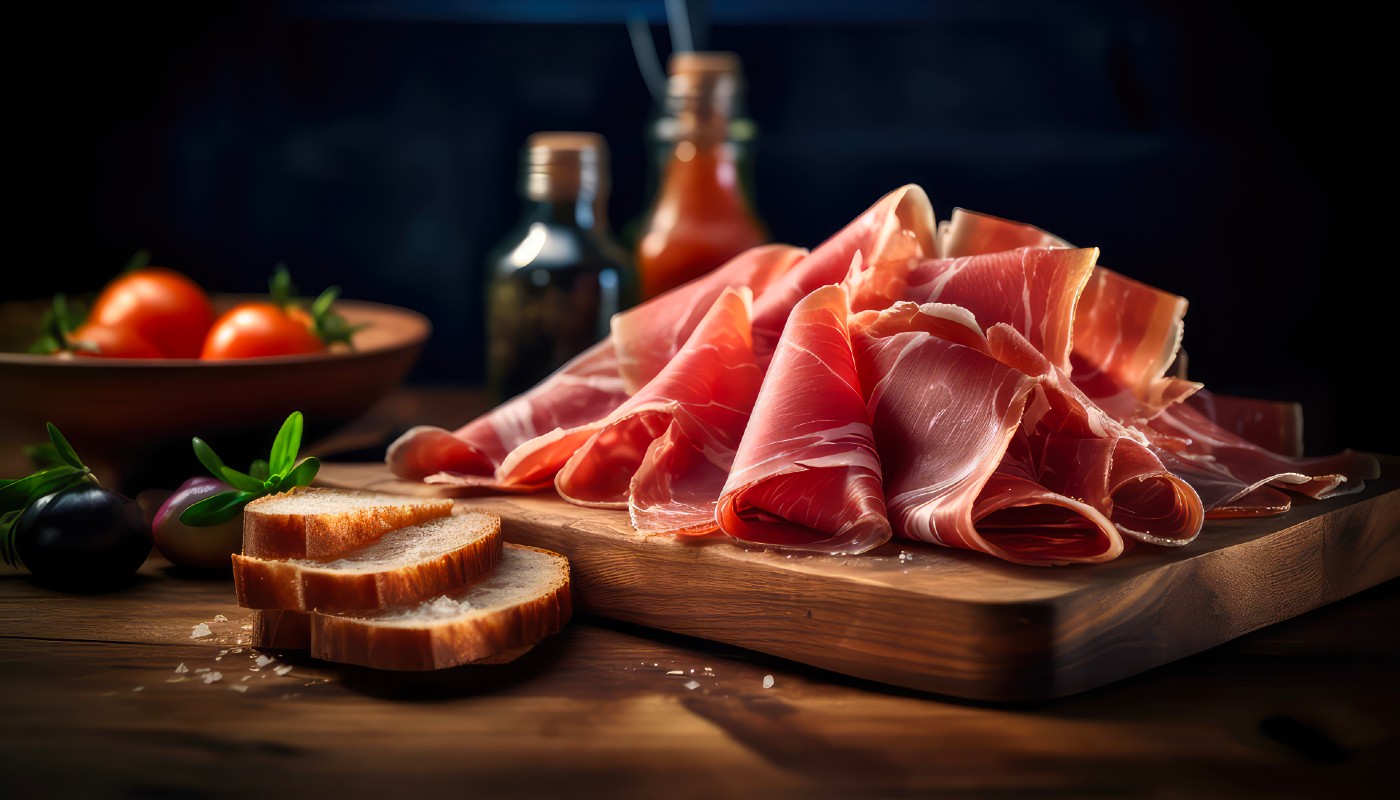Types of hams
Discover the delicious varieties of Spanish ham and their classification: Serrano ham, Iberico ham... Learn about their differences, curing processes, and more!
TRIED AND TESTED
Share

Over the years, ham has become a symbol of our country. Locals and tourists alike enjoy a delicious ham tapa or any dish that features this ingredient. Would you know how to distinguish the different types of ham that exist?
Types of Spanish hams
1. Iberian breed - Iberico ham
Iberico ham comes from the Iberian pig, a thousand-year-old native breed of the Iberian Peninsula and the last survivor of the herding pig breed in Europe. As for its characteristics:
- Pig features: animal with a sharp and narrow snout with short, black hair. Despite its body mass volume, it has a slender physique with long, slim legs.
- Hoof: it's usually black, which is why it is known as 'Pata Negra' (Black Foot). Even so, not all Iberian pigs have black hooves and not all pigs with black hooves are of the Iberian breed.
- Colour, flavour and aroma: the colour of the ham ranges from pink to purple-red. It has a slightly fibrous texture and infiltrated fat. The combination of its delicate flavour and intense aroma makes this delicacy an essential product in the diet of every good foodie.
- Fat: its genetics allow it to store fat in its muscle tissue, providing the unique oily and intense texture of Iberico ham. The fat is shiny, smooth and soft to the touch. Its ability to accumulate fat under the skin and infiltrate it under the muscles gives it a characteristic white streak.
- Types of Iberico ham: depends on the diet. There are 3 types of Iberico ham (or shoulder):
- Iberico de cebo: pig raised on farms and fed exclusively with fodder.
- Ibérico de cebo de campo: pig raised in the field, where it feeds on grasses and natural feed (legumes and cereals). This diet is completely natural.
- Ibérico de bellota: acorn-fed pigs, this is the highest quality Iberian ham. The animal is raised in the pasture and fed on natural food in the growing stage. During acorn season, it feeds on acorns and grass without any added supplement, until it reaches the optimal weight.
The protected designations of origin are Jamón Ibérico D. O. Jabugo, Jamón Ibérico D. O. Los Pedroches, Jamón Ibérico D. O. Jamón de Guijuelo and Jamón Ibérico D. O. Dehesa de Extremadura.

2. White breed - Serrano ham
The ham from white breeds was referenced as far back as the Romans from the end of the second century BC.
- Pig features: the name white pig is due to its appearance, which is usually pale with a light-coloured hoofs. To receive this name, it must be raised in a cold, dry, mountain climate.
- The hoof: it's usually brown with light tones.
- Colour, aroma and texture of Serrano ham: the colour of the ham varies from pink to purple tones. Mild taste, not very salty and pleasant aroma. Homogeneous and not very fibrous texture. Compared to Iberian ham, its aroma, flavour and texture are more gentle and less intense.
- The fat: it's bright, white to yellowish in colour, aromatic and pleasant in flavour.
- Types of Serrano ham: depends on the curing of the meat.
- Serrano Bodega: cured between 10 and 12 months.
- Serrano Reserva: cured between 12 and 15 months.
- Serrano Gran Reserva: cured for more than 15 months.
We can find the PDO Jamón de Teruel and the PGI Jamón de Trévelez.

How to select a good ham
- Touch: by touching different parts of the piece, we can tell for how long it has been cured. The outer fat provides us with information about the quality and the ageing.
- Sight: it gives us information on the proportion of fat that the piece has. The nuances of its colour reveal information about the curing, as drying produces wrinkles in different areas.
- Smell: the 'cala' provides us with very important information about the inside of the piece. We insert a prick, usually made of beef bone, inside the ham to smell it and gauge its saltiness.
- Taste: the best way to know if a ham is at its best is to try it.






